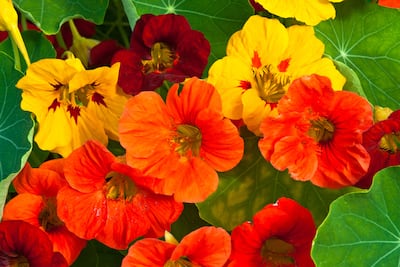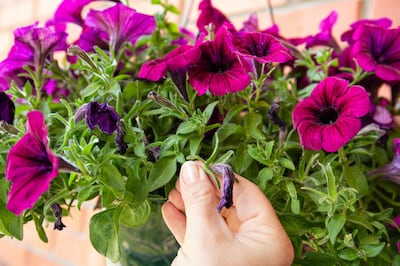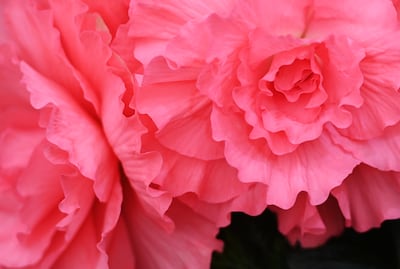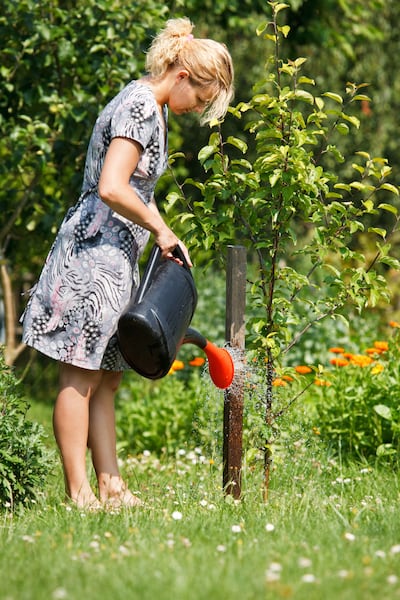In the arc of an Irish gardening year, May is the month of magical things. The first rose. The first swallow. The first properly hot day. The first beech tree in full leaf. The first sighting of wisteria in magnificent lilac bloom, draping itself languidly against a high, sunny wall. As nature flashes its brilliant feathers, it’s also our last real opportunity before summer finally arrives to make a substantial difference to our gardens or allotments, whether that’s filling them with fast-growing annuals to provide plenty of homegrown produce for the months ahead, planting up spectacular summer containers, or fine-tuning flower borders for maximum impact. With all of this in mind, here’s a handy little to-do list to help you stay on course.
May marks your last chance to sow seed of a variety of fast-growing hardy and half-hardy summer-flowering annuals, a wonderfully rewarding and affordable way to get your hands on really generous amounts of these short-lived but hardworking, floriferous, pollinator-friendly plants which can be used to quickly and cheaply fill summer pots and gaps in borders to provide an abundance of colour and cut flowers. Examples include cosmos, amaranthus, corncockle, tagetes, calendula, nicotiana, nasturtiums, Californian poppy, opium poppy, sunflowers and night-scented stock. For reliable results, sow into pots under cover and in gentle heat for pricking out into cell trays/modules and then transplanting outdoors next month. Recommended seed suppliers include all good garden centres as well as the specialist online Irish supplier seedaholic.com

On the other hand, many kinds of fast-growing annual vegetables and herbs can be directly sown outdoors at this time of year as long as the soil isn’t still cold and/or waterlogged as a result of our long, cool, wet spring. Examples include beetroot, carrots, parsnips, chard, perpetual spinach, lettuce, turnips, peas, radish, French beans, runner beans, chervil, dill, coriander and parsley. Just make sure to prepare the soil really well in advance by clearing it of any weeds, dead leaves and large stones before raking it to a smooth and even tilth akin to fine breadcrumbs. Gently water it with a fine spray just before sowing and then again after sowing. Covering freshly sown seed with a few layers of light-permeable crop cover will help to create warm, sheltered conditions suitable for optimum germination as well as to protect the freshly sown seed and seedlings against cold winds, low temperatures and many kinds of common pests. But continue to take studious precautions against slugs and snails in the form of organically acceptable pellets, beer traps and hand collecting.

If you were lucky enough to get seed potatoes in the ground earlier this spring, then it’s also time to earth the plants up by using a garden fork or spade to gently bank up soil around the stems while taking care not to damage the roots. Earthing potatoes helps increase yield, prevents greening of the developing tubers due to exposure to sunlight, and produces stronger, sturdier, more resilient plants.
This is also the time to cover the branches of fruit trees and bushes against bird damage with a fine gauge netting to protect the developing fruit against damage, carefully weighing down the edges with heavy stones or planks of wood to prevent any visiting birds from getting accidentally trapped beneath it. Netted trees and bushes should always be checked daily for the same reason.

For those who garden under cover of a polytunnel or glasshouse, May is the month to get crops in the ground, although it’s still prudent to plan for protection against cool or even frosty night-time conditions until the end of the month (I once lost a dozen strong young tomato plants growing in a polytunnel to a fierce, very late May frost). Examples of crops that can be planted under cover this month include those aforementioned tomatoes, sweet corn, squash, French beans, cucumber, melon, peppers, chilli peppers, courgettes, oca, mashua, yakon and more tender herbs such as basil. Again, take the time to prepare the ground very well in advance of planting by thoroughly removing weeds, working in some homemade garden compost and organic slow-release pelleted fertiliser and ensuring that soil moisture levels are sufficient for good growth. In polytunnels and glasshouses that have been left unused over winter/early spring, clean down the structures thoroughly before planting to reduce the risk of overwintering pests and generously water the soil in advance. For an excellent monthly guide to food growing under cover in our variable Irish climate, see Dublin-based gardener Nicky Kyle’s blog, nickykylegardening.com.

Likewise, if you can offer them some brightly covered growing space where they’ll be safe from the threat of a damaging late spring frost until the end of the month, then mid-May is a brilliant time to plant up summer pots and containers. Go for a variety of heat-loving tender or half-tender bedding plants, using a mix of species to provide a combination of floral and foliage interest. Otherwise it’s best to hold off until the end of May, unless your garden is a warm and sheltered one. Examples of species that will provide plenty of flower include argyranthemum, petunia, surfinia, bidens, nemesia, dahlia, bedding fuchsias, diascia, pelargonium, begonia, calibrachoa, cosmos, felicia, osteospermum, brachyscome, lobelia, tagetes, bedding verbena and nicotiana, all of which are floriferous species commonly used to provide brilliant summer colour. For that all-important foliage interest, classics include the silver-leafed Plectranthus argentatus; the tumbling purple-and-green Plectranthus ciliatus; the silver-leafed, trailing Helichrysum petiolare and tropical-style species including Ricinus communis, cannas, coleus, and hedychiums. Stockists include most good Irish garden centres.
[ Why didn’t my daffodils bloom? It’s probably ‘daffodil blindness’Opens in new window ]
Although at this stage it’s technically a little late in the growing year to produce optimum results, it’s also still well worthwhile mulching the ground around the base of garden roses, established shrubs and ornamental climbing plants with a 2cm-5cm layer of very well-rotted manure or homemade compost or a commercially produced mulch (see enrich.ie; geeup.ie and envirogardenandhome.com), plus a sprinkle of slow-release organic pelleted fertiliser (fruithillfarm.com). These will help to lock in soil moisture, nurture soil health and promote healthy growth.

Given the record rainfall amounts since last summer, I can appreciate that this next piece of advice might be hard to believe. But as temperatures finally start to rise and the soil starts to dry out, it’s also increasingly important to keep a vigilant eye on any recently planted trees, shrubs, perennials and hedging plants to make sure that they’re able to easily source sufficient water at root level. Signs that they’re struggling include wilting of any new growth, and shrinking of the original root ball away from the surrounding soil. If in doubt, stick your finger into the root ball to check moisture levels. If it’s powdery and dry, then water generously.
While it’s not essential, try to find the time to prune certain species of spring-flowering shrubs to encourage plenty of new healthy growth and a generous flowering display next year. Although pruning isn’t advisable for all spring-flowering species, the following will benefit, Ribes (flowering currant).

Last, but not least, take every opportunity you get this month to keep weeds down in cultivated areas through a mixture of hand-weeding, hoeing and mulching. Remember that just one tiny dock or dandelion seedling can quickly grow into a full-sized plant if left unchecked, with the potential to subsequently self-seed itself around the garden or allotment with abundance. Or as the old saying goes, “one year’s seeding, seven years weeding”.
This week in the garden
Keep a careful eye on young seedlings and transplants, which need to be kept watered and protected from slugs and snails, as well as from cold and/or strong winds and low night-time temperatures until they harden up and develop established root systems. A weekly, very diluted liquid seaweed feed (to the colour of very weak tea), is a great way to boost their resilience and growth levels.
Keep training the fast-growing twining stems of summer-flowering clematis against walls, trelliswork or up a nearby mature woody host plant, spreading them out to produce good even growth and a fully visible display of flowers later in the season.
Dates for your diary
Tuesday May 21st-Saturday May 25th, RHS Chelsea Flower Show, see rhs.org.uk
Saturday, May 25th (11am-5pm), Teak House, National Botanic Gardens, Glasnevin, Dublin 9, Irish Cactus and Succulent Society Show with plant displays, plant sale and demonstrations
Thursday, May 30th-Monday, June 3rd, Phoenix Park, Dublin, Ireland’s largest annual garden show Bord Bia Bloom returns, with a host of show gardens, displays and floral exhibits, plant stalls, demonstrations and talks, see bordbiabloom.com
- Sign up for push alerts and have the best news, analysis and comment delivered directly to your phone
- Find The Irish Times on WhatsApp and stay up to date
- Listen to our Inside Politics podcast for the best political chat and analysis












